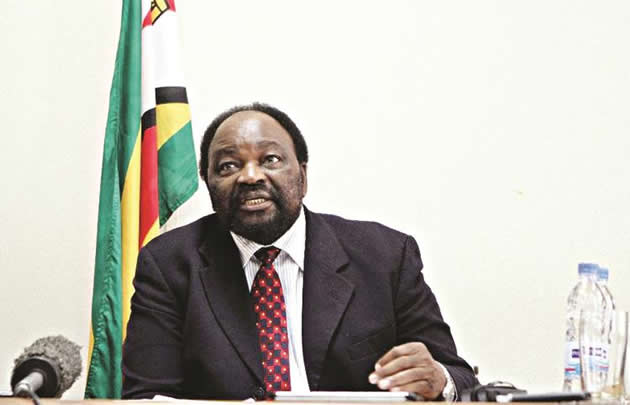Sadc industrialisation plan central to development

Kizito Sikuka and Danai Majaha
Chairperson of the Sadc Council of Ministers Cde Simbarashe Mumbengegwi was very lucid in his assessment of why Southern Africa should prioritise industrialisation in its bid to boost regional development and integration. “The question of industrialisation is absolutely critical because without industrialisation development becomes absolutely meaningless,” Cde Mumbengegwi, who is also Zimbabwean Foreign Affairs Minister, said in his pre-Sadc Council media briefing held in Harare on March 3.
True to his assessment, most Sadc countries continue to be among the poorest in the world despite abundant natural resources as the majority of them export these in their raw or unprocessed form.
As a result, Sadc countries get very little in return since most of the value-addition and beneficiation takes place outside the region, and benefits others.
So how is Sadc addressing this situation to ensure that the region is able to get higher returns from its resources?
“This is a debate which has been going on…but I think there is now a consensus within our region that before you liberalise trade, you must have something to trade with, in the first place, hence the need for us to focus on the value addition and beneficiation of our products and ensure that each of our countries are able to do some beneficiation and value addition of products on which they enjoy competitive advantage,” Mumbengegwi said.
This focus shift towards industrialisation for Sadc has been gathering momentum since Sadc leaders at their 34th Summit held in Victoria Falls mandated the Ministerial Task Force on Regional Economic Integration to develop a strategy and roadmap for industrialisation in the region.
Sadc Executive Secretary, Lawrence Stergomena Tax said an interim report on industrialisation in the region is now ready for presentation to the Sadc Council, and ultimately to an Extraordinary Sadc Summit, scheduled for Zimbabwe on April 30, for approval.
“The development of the industrialisation strategy commenced in December 2014, following completion of the preparatory phase which included resource mobilisation, preparations of terms of references and assembling experts,” Tax said while addressing the meeting of the Ministerial Task Force on Regional Economic Integration.
“The Interim Report lays the foundation for the Industrialisation Strategy and Roadmap, outlining key elements and recommendations on which the strategy will be anchored on.”
She said finalisation of the on-going review process of the Regional Indicative Strategic Development Plan (RISDP) will also take into account issues of industrialisation.
The RISDP is a 15-year strategic plan approved by Sadc leaders in 2003 as a blueprint for regional integration and development.
The plan is under review as part of efforts to realign the region’s development agenda in line with new realities and emerging global dynamics.
“Work on the Revised RISDP is moving simultaneously, finalisation of which needs to be informed by the industrialisation strategy and roadmap,” Tax said.
“The primary objective is to ensure that industrialisation is prioritised and takes centre stage in the finalisation of the RISDP. Hence, these processes are going on in tandem, and the two documents will be presented for approval in April.”
However, before being presented during the Extraordinary Sadc Summit of Heads of State and Government on April 30, the Sadc Council is expected to once again meet prior to the summit to finalise the two documents.
The Sadc Council of Ministers is made up of Ministers of Foreign Affairs, Economic Planning or Finance, and Infrastructure from the 15 member states, and mainly oversees the functioning and development of Sadc.
The Council of Ministers met in Harare on March 6-7 to discuss a wide-range of issues, including reviewing progress on the implementation of various decisions, programmes and plans made last year to deepen integration, as well as deliberate on priorities identified for this year.
The identified priorities include improving agricultural production and productivity, infrastructure development, peace and security, as well as trade and industrialisation.
With regard to infrastructure development, priority for this year is on implementation and operationalisation of the Project Preparation Development Fund (PPDF) as well as other initiatives aimed at supporting the scaling up of industrialisation.
The PPDF aims to facilitate preparation of bankable projects in the region so that the region is able to fully implement its Regional Infrastructure Development Master Plan (RIDMP) launched in 2012.
Under this ambitious infrastructure plan, Sadc aims to develop cross-border infrastructure in the six key areas of energy, transport, tourism, water, information communication technology and meteorology.
In this regard, PPDF financing will only be made available to those projects that have regional significance and fall under the six key areas as identified by the RIDMP.
On agriculture, Sadc aims to intensify efforts to operationalise the Regional Agricultural Policy (RAP) that was approved by Sadc leaders last year, by developing RAP investment plans that are designed to kick start and support project and programmes implementation of the RAP.
Other interventions for the year include completion of negotiations to launch a Grand Free Trade Area involving the Common Market for Eastern and Southern Africa (Comesa) and the East African Community (EAC).
Comesa, EAC and Sadc are expected to establish an enlarged FTA in May/June that will create a wider market covering 26 countries in Eastern and Southern Africa with a combined population of approximately 600 million people, spanning from Cape to Cairo. — sardc.net











Comments